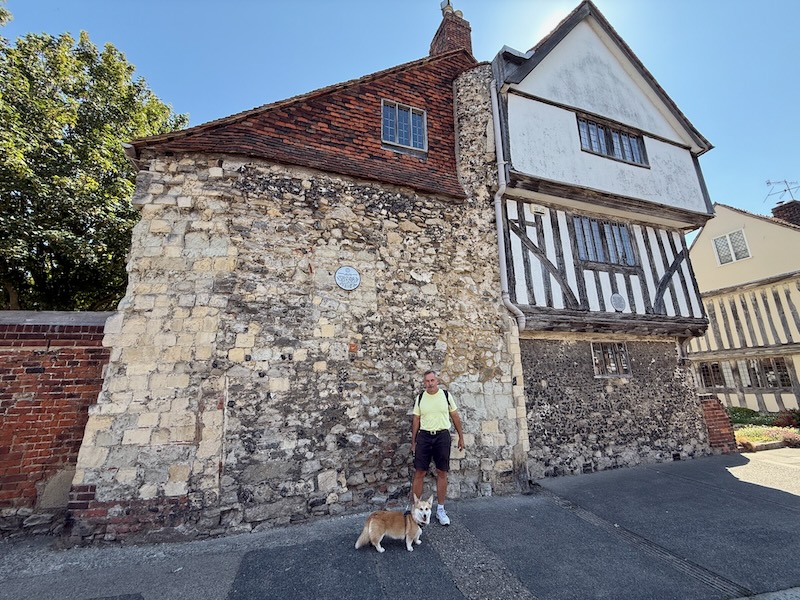Our Blog - August 2025 - England trip - Faversham
Faversham is another "market town" that dates back to pre-Roman times. The name of the town is of Old English origin, probably meaning "the metal-worker's village". It was inhabited by the Saxons and mentioned in the Domesday Book of 1086 as Favreshant. It established itself as a center for brewing, and the Shepherd Neame Brewery, founded here in 1698, is supposedly Britain's oldest brewer.
The current Alexander Center is housed in what was called Gatefield House, a 1860's mansion built by Henry Barnes, the local "brick baron" who made his fortune making bricks for London, especially for the new sewer system. It was renamed in 1977 for Sir Sidney Alexander, the Mayor here from 1910-1919.
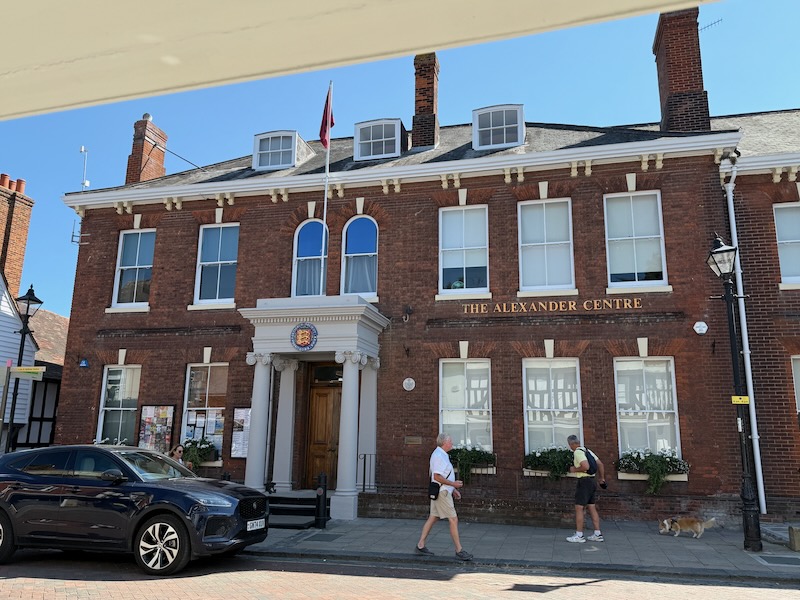
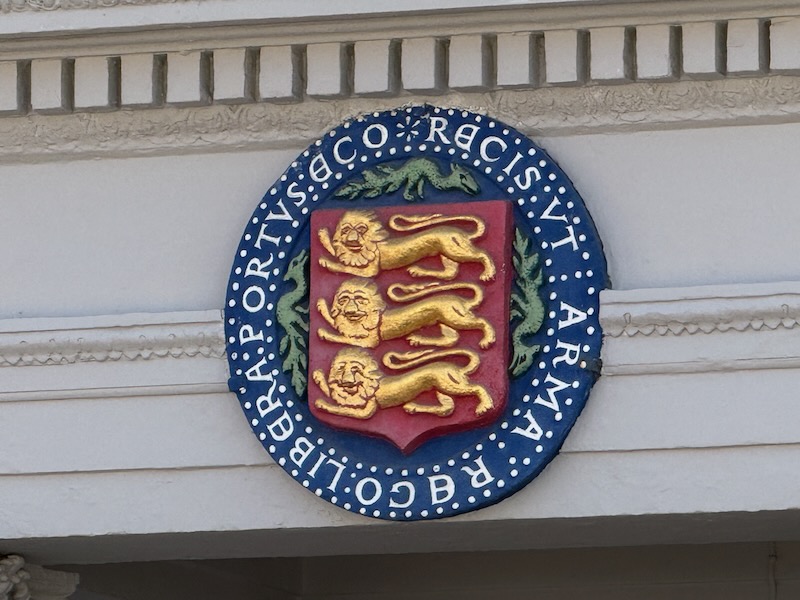
Next door is the former Fleur de Lis, which was a medieval inn. It now houses a local heritage museum for the city.
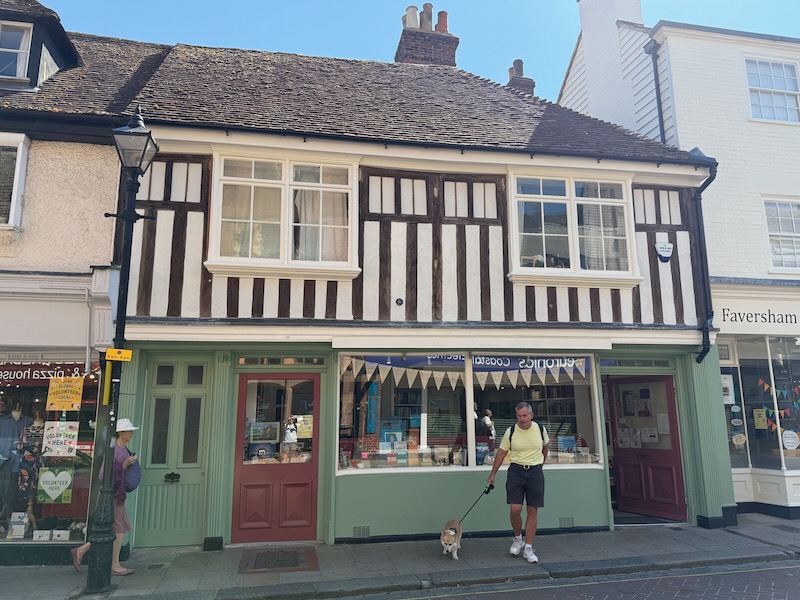
I mentioned this was a market town, so there is a Market Square. The market itself has been here at least since the Domesday Book of 1086, making it supposedly the oldest in Kent. The green Guildhall has wooden Elizabethan pillars that date from 1574 but the upper floor was rebuilt in 1814 after a fire.
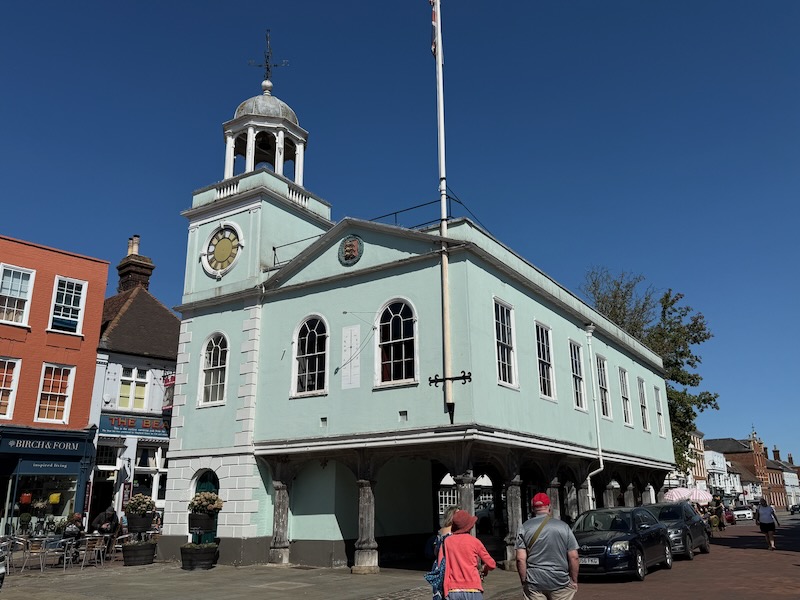
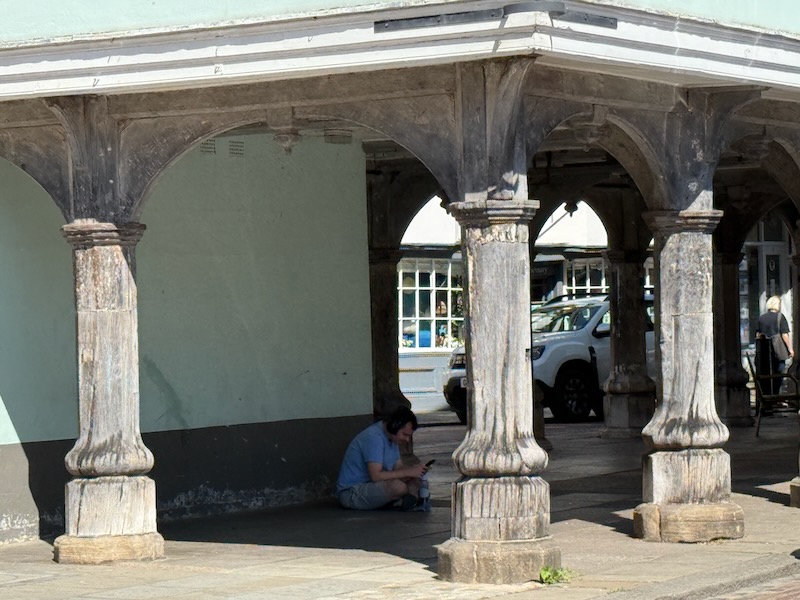
Around the square are other interesting buildings: this first one from 1570, the white-and-blue Ship Inn, dating from the 16th century when King Henry VIII's fleet was anchored in nearby Faversham Creek. The Bear Inn says it is the earliest surviving pub from the Middle Ages in Faversham.
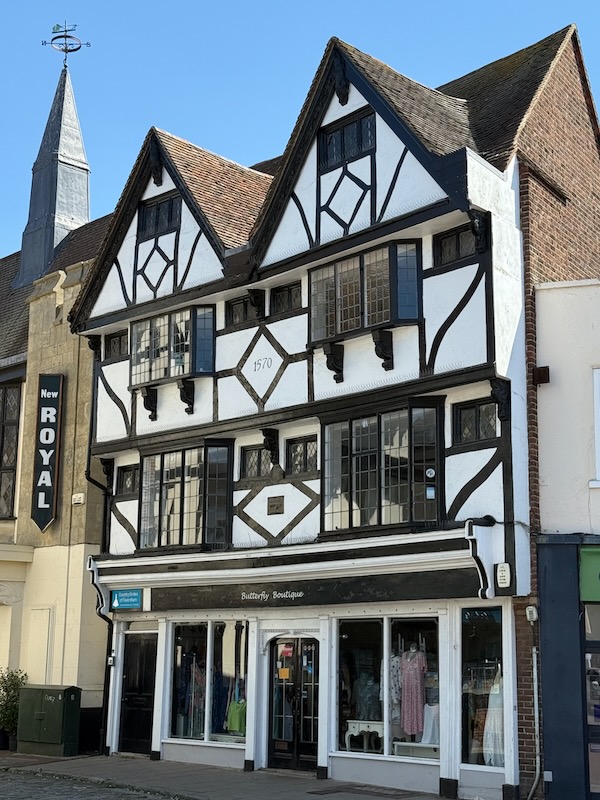
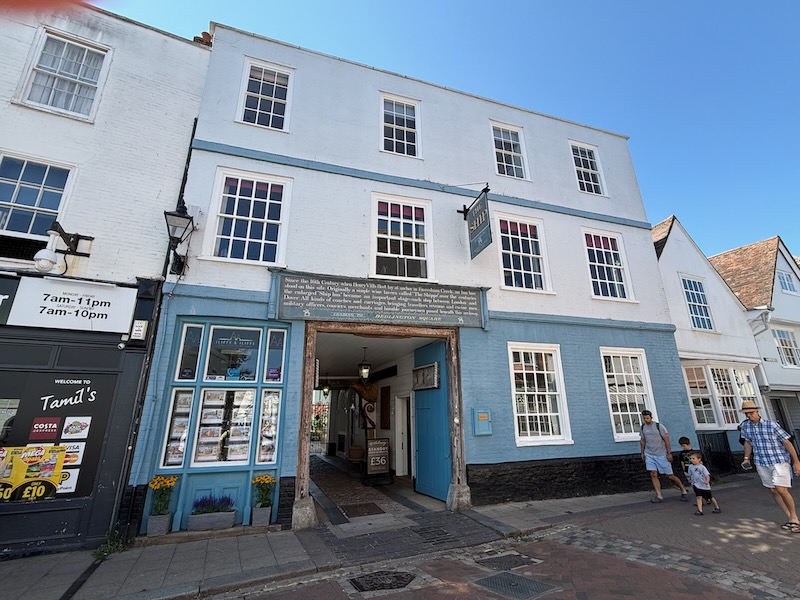
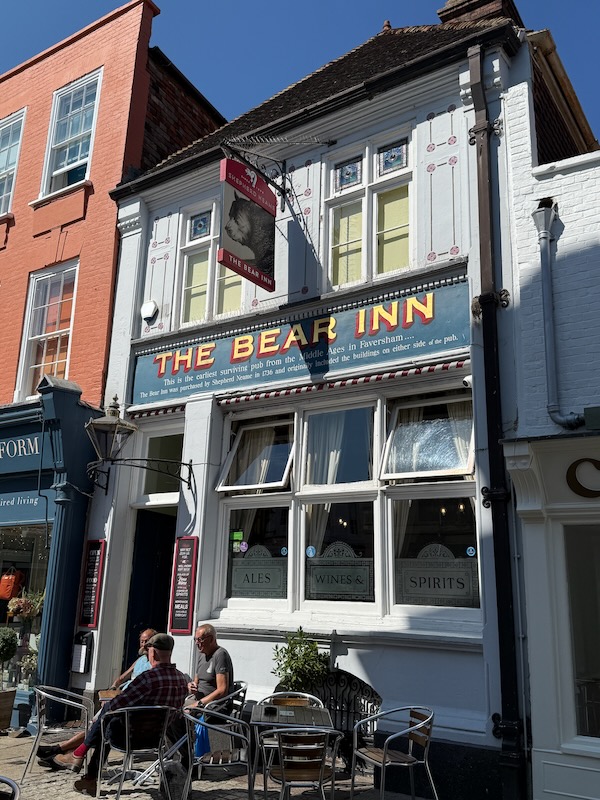
I mentioned Shepherd Neame Brewery was founded in 1698, and offers brewery tours through this nice old building. We skipped it because dogs were not allowed during the tour.
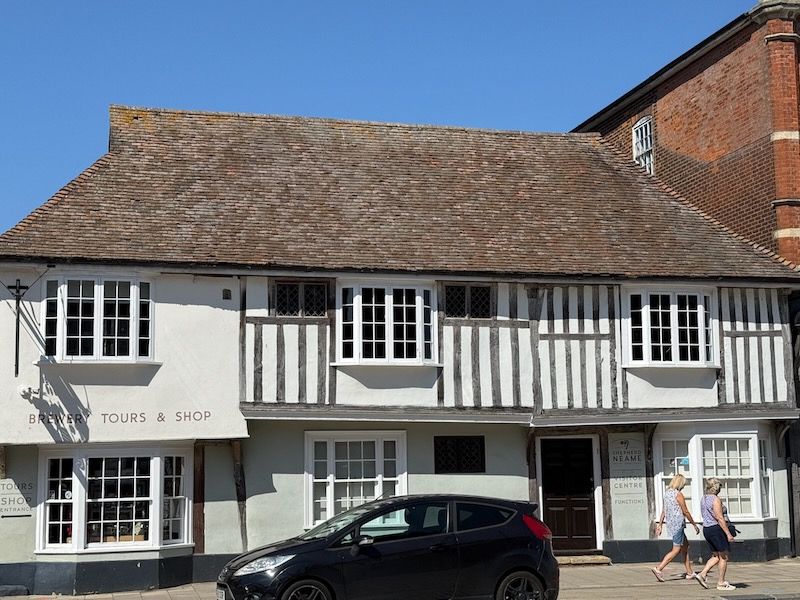
The first documented evidence of the St Mary of Charity Church in Faversham goes back to 1070, in a Charter of William the Conqueror. The church is one of the few dedicated to St Mary of Charity, one of the town's surviving links with Faversham Abbey. King Stephen and Queen Matilda were buried in the Abbey. However, legend says that when the Abbey was sacked and dissolved, their remains were dug up and thrown into a creek. The spire, called the Crown Spire, was built in 1794 after the previous tower and nave were found unsafe and demolished.
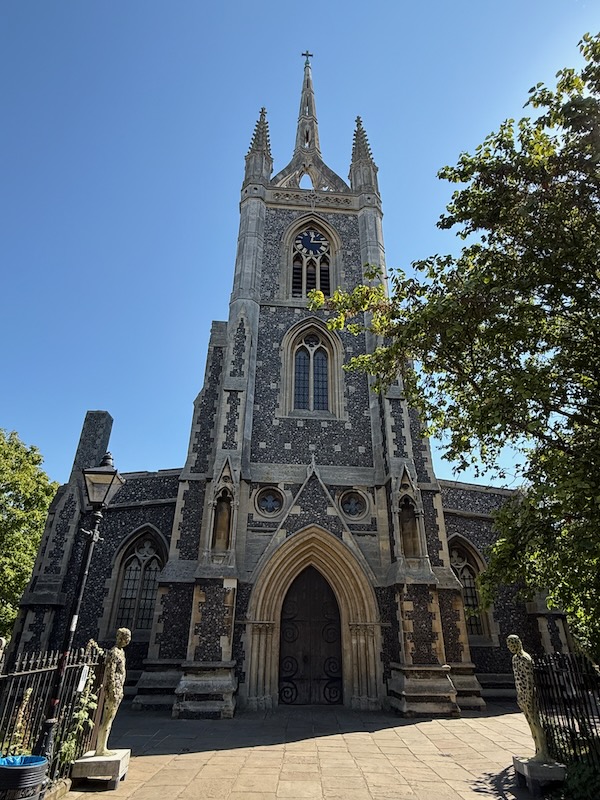
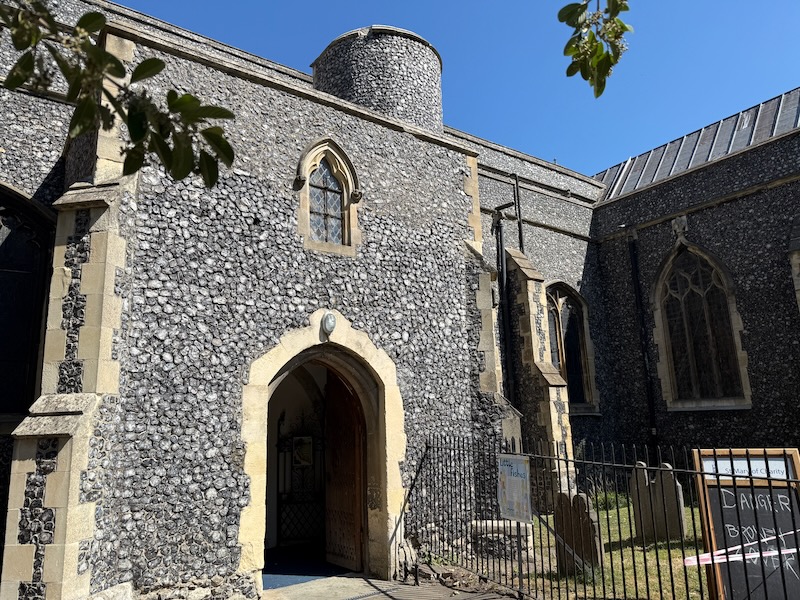
The nave is definitely different than most of the English churches we saw. It is rectangular with side aisles separated by columns, but the real differences are when you look up ... a flat, white ceiling and blue upper-walls with white molding decoration.
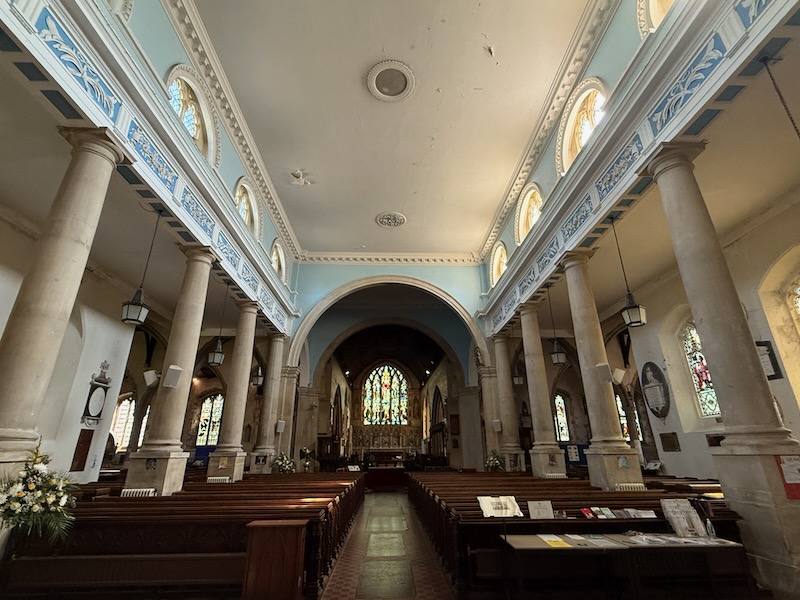
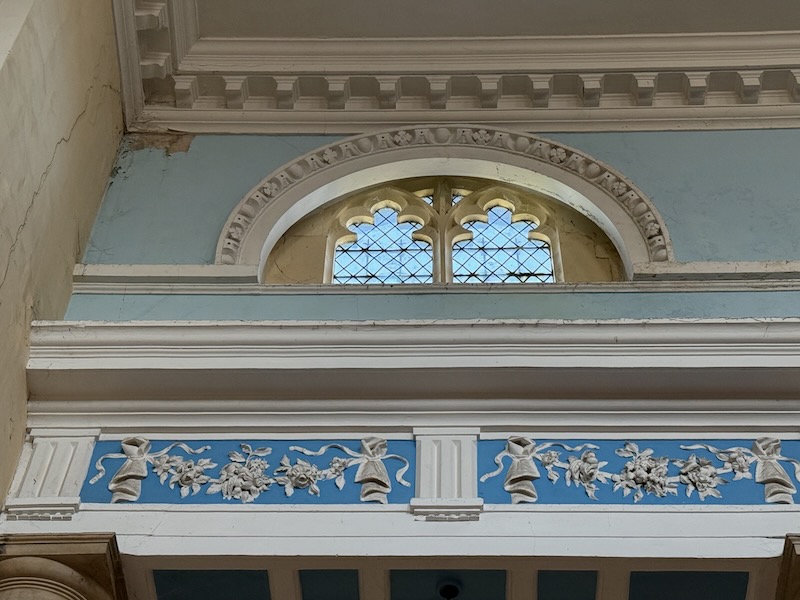
I think the baptismal font was really nice, although I can't tell you what year it dates from. The information panel did say that the lids were added around the 13th century to protect the baptismal water from dust, bugs, and anything else that would pollute the water.
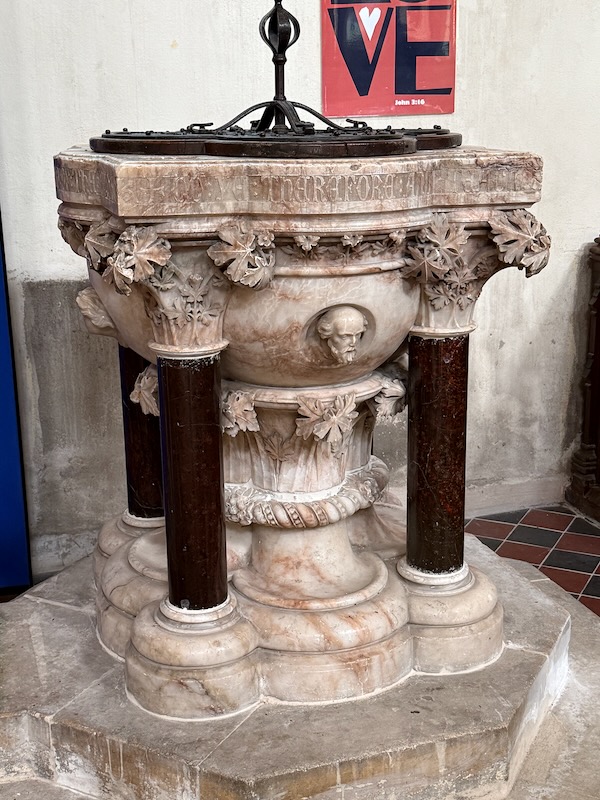
One of the greatest treasures in the church is the painted column featuring ten events in the life of our Lord. Dating from circa 1306, the column is one of only a few to survive in Britain. It is octagonal in shape and has painted scenes depicting stories from the Annunciation through the Passion.
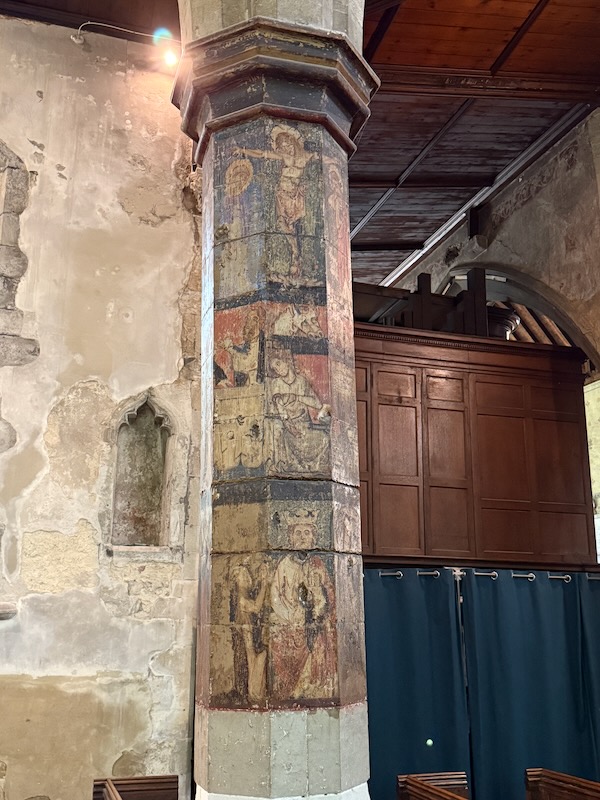
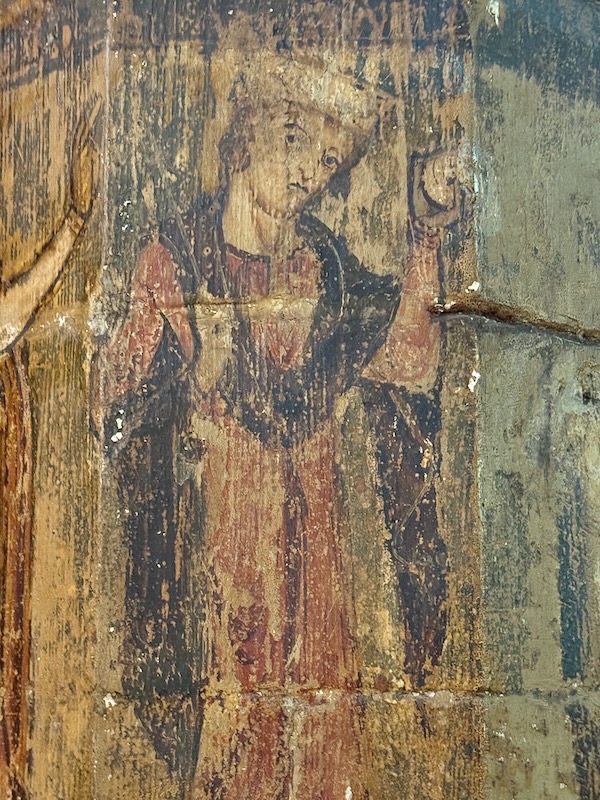
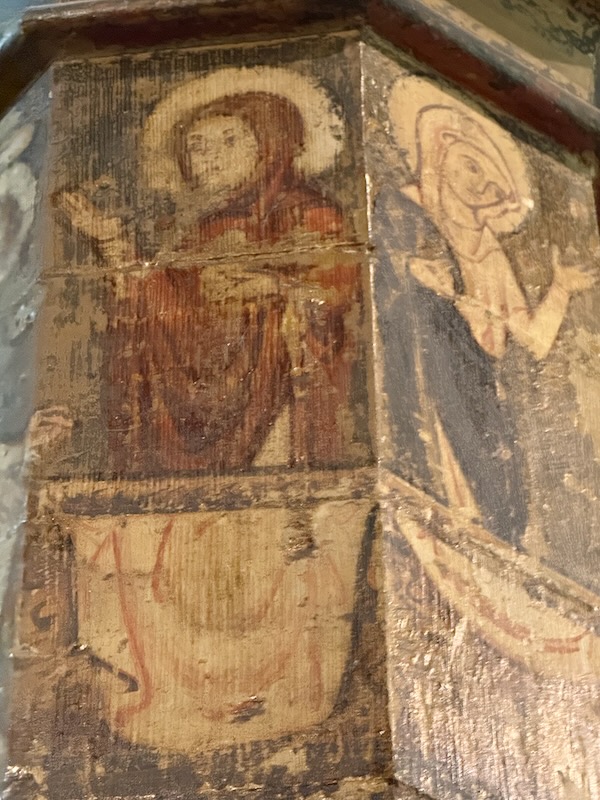
In the Sanctuary, the ceiling is more typical of English churches, being a wooden "boat-shape" ceiling. There is also a really nice triptych as the altarpiece. The stained-glass window behind has a variety of saints, including Saint Helena holding a large wooden cross.
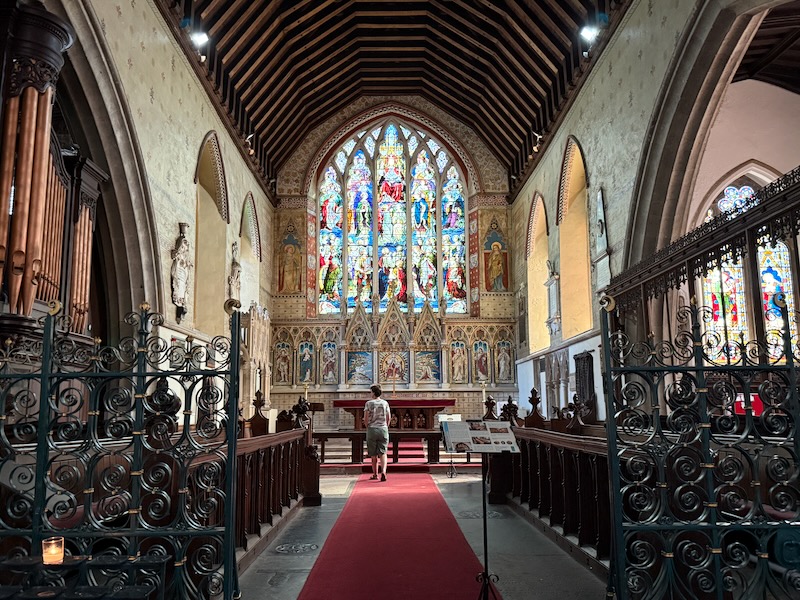
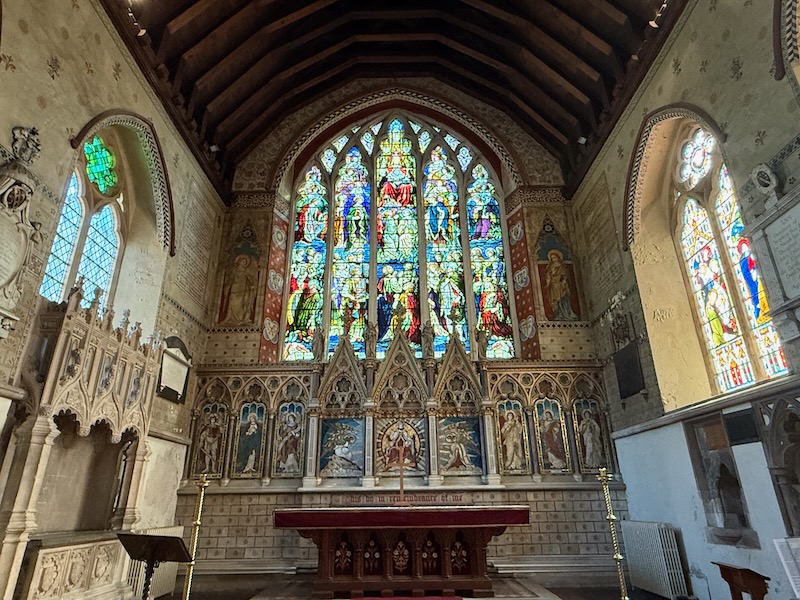
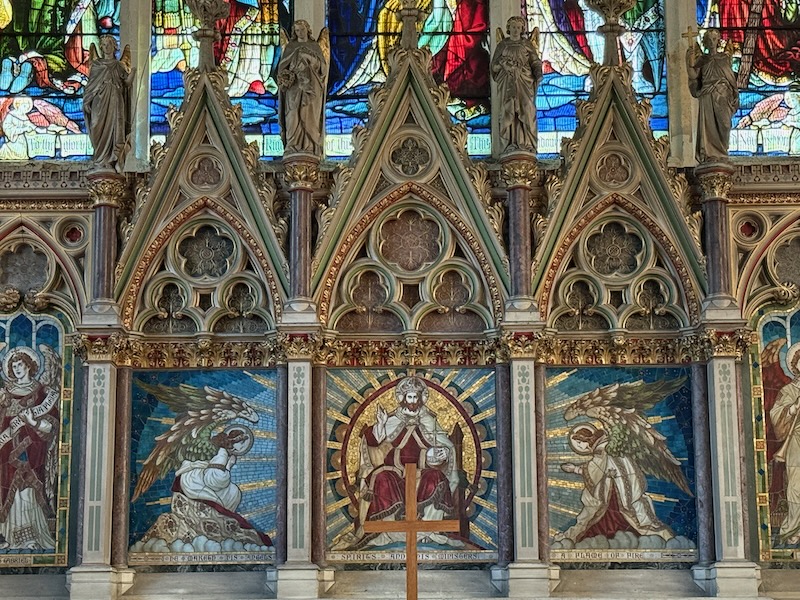
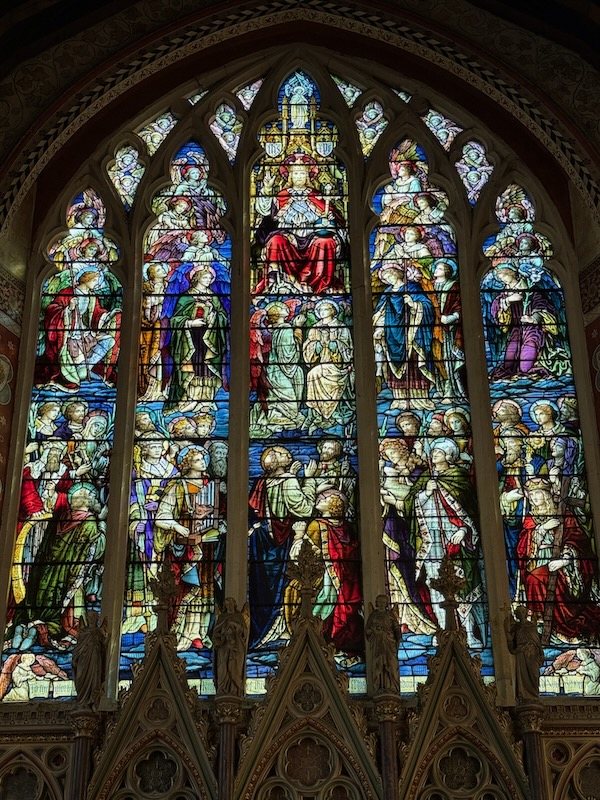
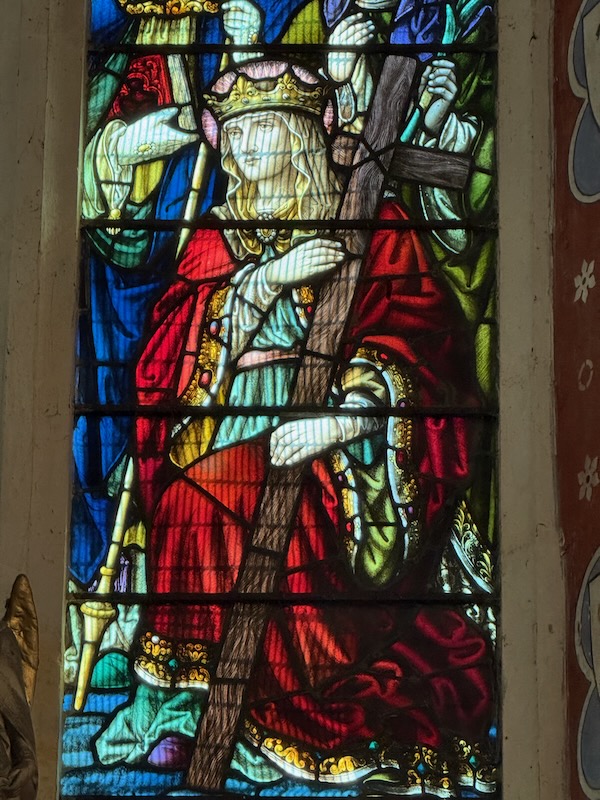
The choir stalls have carvings on the back of the stalls and the railings, called "misericords".
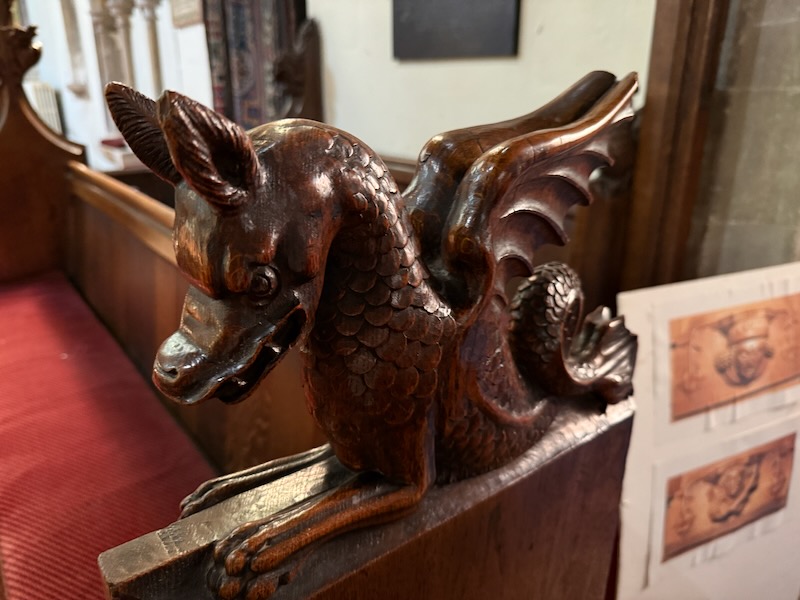
This was where the outer gateway of the Faversham Abbey was when the Abbey was founded in 1147. The archway was demolished in 1772 but one portion of the gatehouse was incorporated into the house. The house is called Arden House, and it is immortalized in the Elizabethan drama "Arden of Feversham", which MAY have been partly written by William Shakespeare (the authorship is unknown with it being attributed to several people over the years). It depicts the real-life murder of Thomas Arden by his wife Alice Arden and her lover, and their subsequent discovery and punishment.
